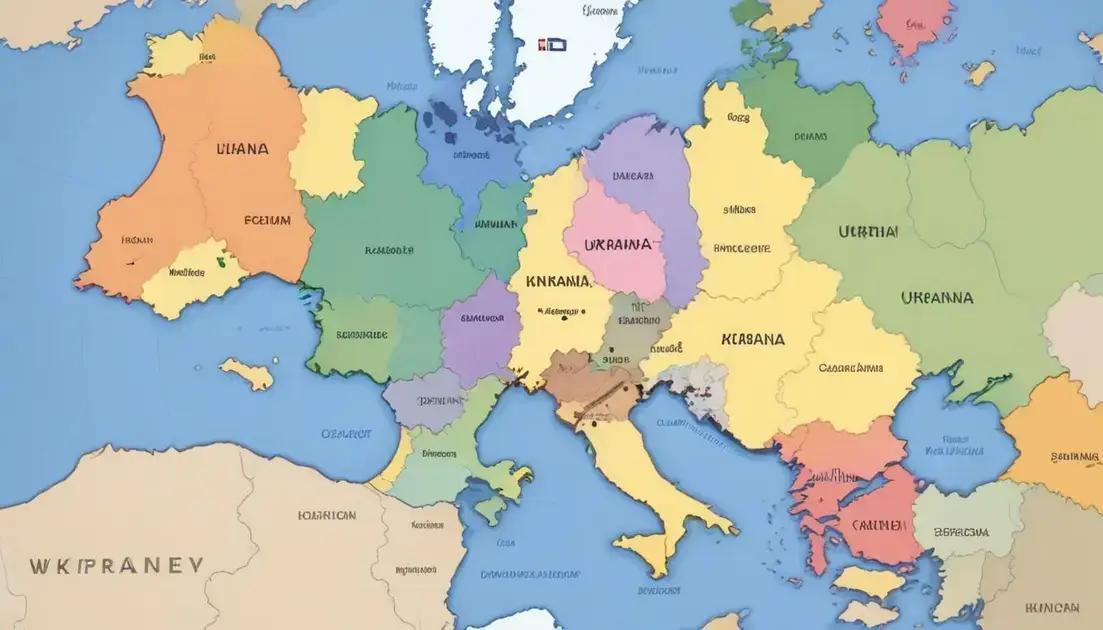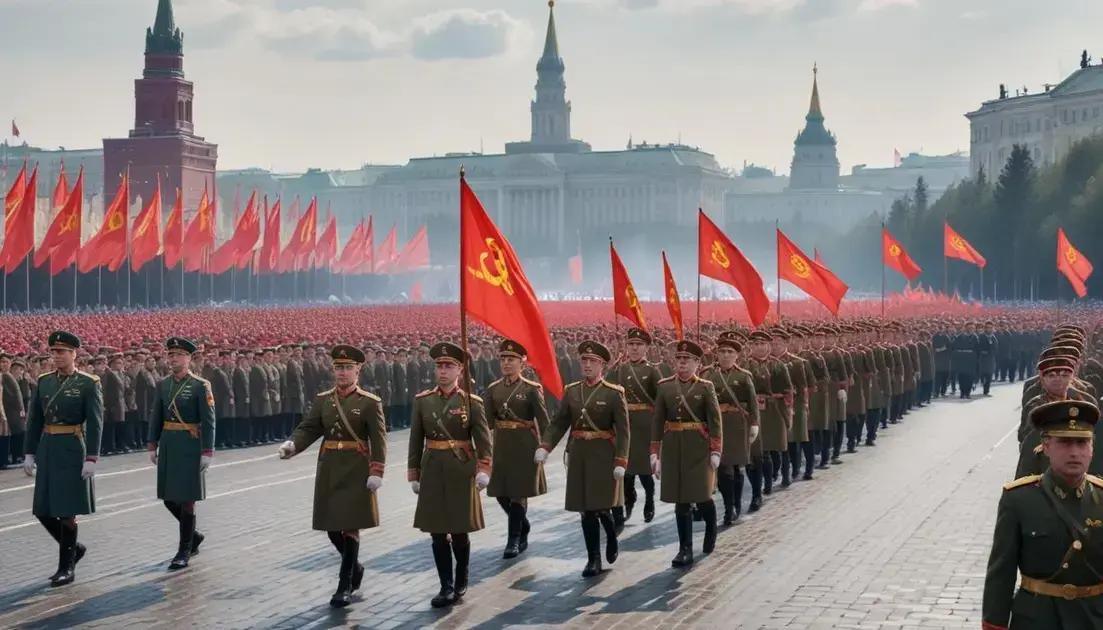
U.S. and China: The New Global Rivalry
The U.S. and China share a complex rivalry that impacts global politics and economics. Key factors include their military strategies, economic competition, and cultural exchanges. Both nations influence international trade, technology advancements, and climate policies. Understanding this dynamic is essential for grasping future trends, as both powers may lead to new alliances while facing significant challenges together.
Geopolitics between the U.S. and China is rapidly evolving, creating a dynamic that shapes global relations. Let’s dive into what this rivalry means for the world!
The Historical Context of U.S. and China Relations
The relationship between the U.S. and China is complex and has deep historical roots. It goes back to the 18th century when U.S. traders began exchanging goods with China. This interaction laid the groundwork for future relationships.
Early Relations and Trade
In the 1800s, the two nations started formal trading agreements. The Treaty of Wanghia in 1844 marked the first step for the U.S. in establishing trade rights with China.
The Opium War
The Opium War in the mid-1800s shifted perceptions. It highlighted the power imbalance, as Britain forced China to accept opium trade. This led to several unequal treaties that favored Western countries.
The Rise of Conflict
Fast forward to the 20th century during World War II, where the U.S. and China found common ground against Japan. After the war, however, the rise of communism in China strained relations again.
Cold War Tensions
During the Cold War, relations hit a low point. The U.S. viewed China as a communist threat. This period saw little interaction, with both countries suspicious of each other.
Opening Diplomatic Channels
Things began to change in the 1970s. President Nixon’s visit to China in 1972 opened doors. It marked the start of a new era of engagement and cooperation.
Understanding this historical context is vital to grasp the current dynamics between these two global powers. The past shapes how they interact today, influencing political and economic ties.
Key Military Strategies
Military strategies between the U.S. and China are critical to their rivalry. Each country aims to strengthen its position in global power. Understanding these strategies helps explain current tensions.
U.S. Military Presence
The U.S. maintains bases around the world. This presence helps protect its interests and allies. It allows quick responses to potential conflicts. The focus is on readiness and adapting to new threats.
China’s Military Modernization
China has been modernizing its military rapidly. It invests in advanced technology like missiles and naval power. This aim is to enhance its influence, especially in the South China Sea.
Joint Exercises and Alliances
Both countries participate in military exercises with allies. The U.S. often trains with NATO countries. China conducts joint drills with countries like Russia. These actions show strength and build relationships.
Cybersecurity and Information Warfare
Cybersecurity is crucial in modern military strategies. Both nations focus on protecting their data and systems. Information warfare is also a tactic they use to influence public opinion.
Future Challenges
The rivalry poses challenges for global peace. The race for military superiority could lead to miscalculations. Open communication and dialogue are essential in preventing conflicts.
Economic Implications of the Rivalry
The economic implications of the rivalry between the U.S. and China are significant. This competition affects markets, trade, and global economies. Understanding these impacts helps clarify the stakes involved.
Trade Policies and Tariffs
Both countries have imposed tariffs on each other’s goods. These tariffs raise prices for consumers and businesses. This makes products more expensive and affects purchasing decisions.
Supply Chain Disruptions
The rivalry has led to disruptions in global supply chains. Companies rely on both nations for parts and materials. Any conflict can delay production and impact availability.
Foreign Investment Trends
Investors watch the rivalry closely. U.S. companies are cautious about investing in China. Conversely, Chinese firms are reevaluating investments in the U.S. This uncertainty can affect overall market conditions.
Technology Competition
The race for technology supremacy is intense. Both nations are investing heavily in tech sectors. Innovations in AI, 5G, and other technologies are crucial for economic power.
Impact on Global Economies
The rivalry shapes how other countries interact with the U.S. and China. Nations may align with one side or the other. This can lead to changes in global economic partnerships and alliances.
Cultural Exchange and Influence
Cultural exchange between the U.S. and China is rich and diverse. It shapes how each country views the other. Understanding this exchange helps highlight its importance in the rivalry.
Historical Connections
Historically, cultural connections have existed for years. Many Americans are drawn to Chinese art, cuisine, and traditions. Similarly, Chinese people admire American pop culture and values.
Education and Study Abroad
Education is a key part of cultural exchange. Many Chinese students study in the U.S. This brings fresh perspectives. American students also study in China, learning about different cultures.
Film and Media Influence
Film and media play big roles in shaping views. Hollywood films are popular in China. They influence culture and trends. Chinese films are also gaining attention in the U.S., showcasing unique stories.
Social Media and Communication
Social media connects people across borders. Platforms like WeChat and Twitter facilitate interactions. These connections allow for shared experiences and understanding, despite political differences.
Challenges in Exchange
While cultural exchange is important, challenges exist. Different political views can create tension. Misunderstandings can arise from media portrayals. It’s essential to promote dialogue and understanding.
Future Trends in Global Politics
Future trends in global politics are essential to understand. The relationship between the U.S. and China will shape many outcomes. Many factors will influence these trends in the coming years.
Emerging Technologies
Technology is changing how countries interact. Advances in AI, cyber warfare, and space exploration are key. Nations will need to navigate these changes carefully to maintain power.
Climate Change Policies
Climate change is a global challenge. Both countries must collaborate on solutions. This can lead to new alliances based on shared goals for the planet.
Shift in Economic Power
As China’s economy grows, it may challenge U.S. dominance. Countries must adapt to this shift. This can lead to new trade partnerships and political alliances.
Regional Conflicts and Stability
Regional conflicts can impact global politics. The U.S. and China have interests in different areas. How they address these conflicts will shape regional stability.
International Organizations
The role of international organizations is also changing. Groups like the UN and WTO must adapt. They need to address new challenges and ensure cooperation between nations.
Conclusion
In conclusion, the rivalry between the U.S. and China shapes not only their futures but also the entire world. Understanding the historical context, military strategies, and economic impacts is essential for grasping current events. Cultural exchanges and future trends in global politics will influence how these two powers move forward.
Coping with challenges like trade disputes and environmental issues requires cooperation. The path ahead will likely involve both competition and collaboration. By recognizing the complexities in this relationship, we can better understand the dynamics at play and prepare for what lies ahead in global politics.


